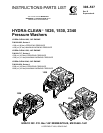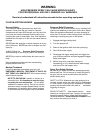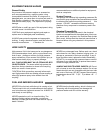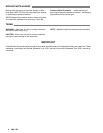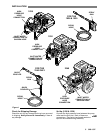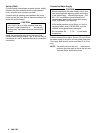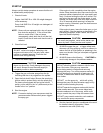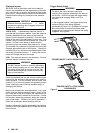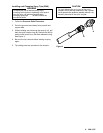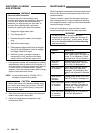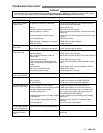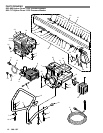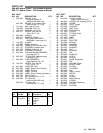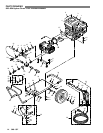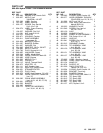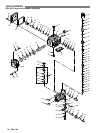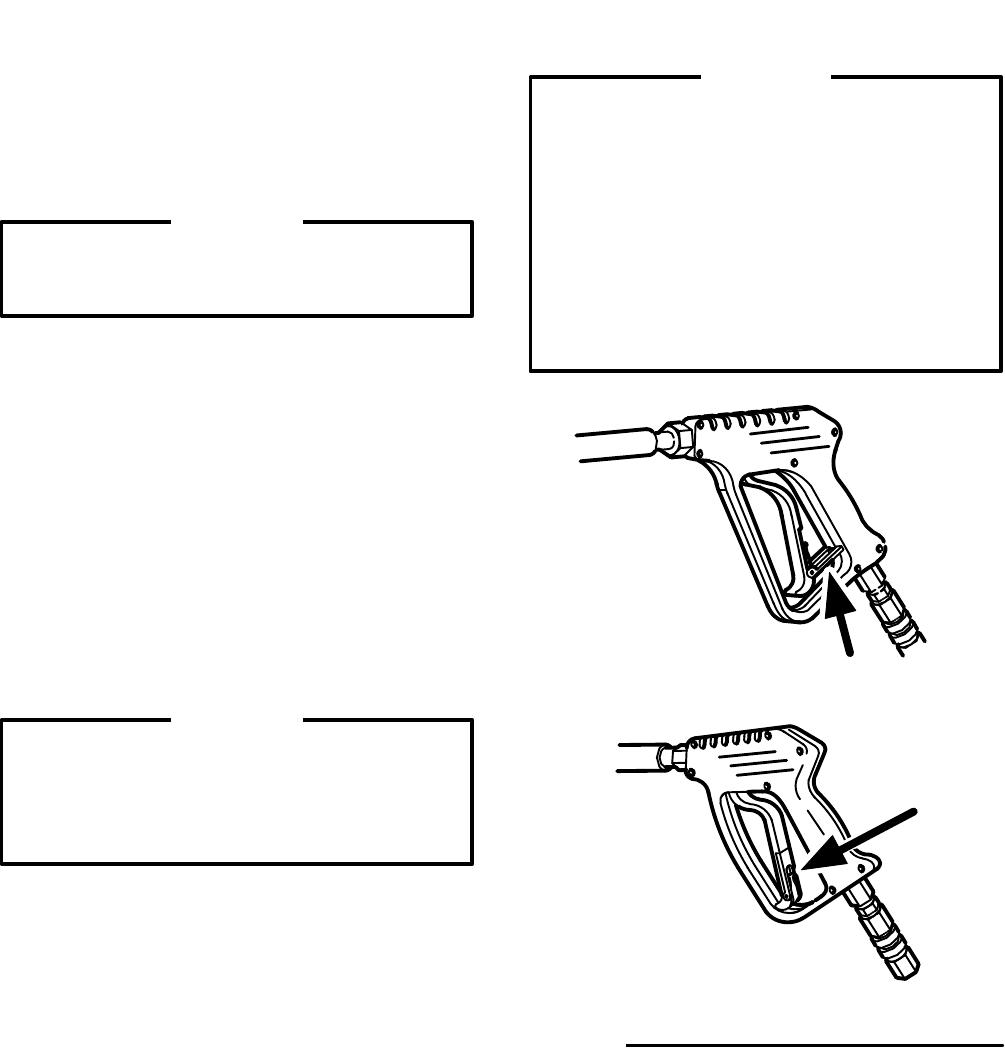
8 308-537
Chemical Injector
BE SURE
that all chemicals used in the chemical
injector
are compatible with the
wetted parts of the hose,
gun,
wand and tip,
as given in the T
echnical Data (inside
back
cover).
Always read the chemical manufacturer
’s
literature before using any chemical in this pressure
washer.
WARNING
Observe chemical manufacturer ’s safety
precautions regarding use of goggles, protective
clothing or respirators.
1026 & 1530: A downstream chemical injector is
provided
with the pressure washer
. Insert the
chemical
strainer (attached with clear tubing to the chemical
injector)
into the container of chemical. Push the nozzle
holder
on the end of the wand away from the gun. This
causes a drop in pressure that actuates the chemical
injector. Pull the nozzle holder to deactivate the
chemical
injector and produce high pressure for rinsing.
The
flowrate of the chemical is regulated
by turning the
chemical adjuctment knob on the injector . Maximum
chemical
flow is at a full two turns counterclockwise
from
the closed (clockwise) position. T wisting the nozzle
holder
will change the spray fan angle.
2340: The chemical injector is an accessory. See the
chemical
injector instruction manual.
WARNING
DO NOT
attempt to open or close the adjustable
nozzle
when the spray gun
is in use. Be sure that
the trigger safety latch on the gun is in the ”ON”
position before adjusting to avoid serious bodily
injury
or fluid injection.
Check
the distance that you will need to hold the spray
nozzle from the surface by test spraying on a scrap of
similar
material. For soft surfaces, such as wook, hold
nozzle
3 ft (1 m) from the surface and gradually bring it
closer, checking to see if the high pressure spray is
damaging
the surface.
Mist the wet surface with cleaning solution. Let it soak
briefly,
then use the high pressure rinse to ”chisel” of
f the
soil.
Keep the nozzle at an angle to the surface and at a
distance
determined to be best for the surface. If some
soil
remains, repeat
the procedure, letting the chemical
soak a little longer . Stubborn soil can be cleaned of f
better
with a stronger
, heated cleaning solution.
Protect
surfaces
that might be damaged by the cleaning
solution or the high pressure spray. Rinse the solution
before it dries.
Trigger Safety Latch
WARNING
To reduce the risk of serious bodily injury ,
including fluid injection, splashing in the eyes or
on the skin,
ALWAYS
engage the trigger safety
latch whenever spraying stops, even for a
moment.
In the engaged position, the trigger safety latch
prevents the gun from being triggered
accidentally
by hand or if it is dropped or bumped.
Be sure the latch is pushed fully down when
engaging
it or it cannot
prevent the gun from being
triggered.
See Figure 2.
Figure 2
TRIGGER SAFETY LA
TCH SHOWN ENGAGED
TRIGGER SAFETY LA
TCH SHOWN
DISENGAGED



